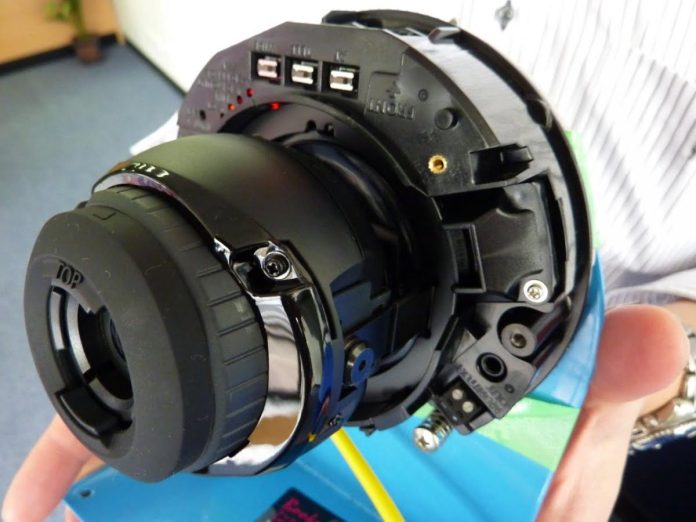WE took a look at Uniview’s 1080p IPC542E-DUG Starlight full body camera recently and came away impressed with the camera’s overall capabilities. This is an affordable camera that does very well with WDR, extremely well in low light between 2-10 lux in colour. And between sub-1 and 2 lux in night mode this camera really blew us away.
UNIVIEW’S IPC542E-DUG Starlight full body day/night camera, distributed locally by C.R. Kennedy, is the first Uniview camera we’ve tested. Uniview is the third of China’s big CCTV camera manufacturers and the company makes a full suite of CCTV gear. Quality is good, judging by the build of this metal-bodied camera and others we saw at Security 2015 in Melbourne. There’s nothing rough here – Uniview’s Starlight is a handsome and well-made piece of hardware.

The Starlight’s specifications look strong, kicking off with a chunky 1/1.9-inch progressive scan CMOS sensor. Low light performance in colour is claimed to be 0.002 lux (starlight on a clear night) and an optimistic 0.0002 lux in monochrome – both at very wide apertures of F1.2, 50IRE and probably the slowest shutter setting of 1/6th of a second. We never get too much under 1 lux at the lens and Starlight has to be pushed into black and white in our lane test.
Other interesting specifications include WDR numbers of 120dB, signal-to-noise ratio of around 52dB, a strong temperature range of -20 to 60C, resolution of 1920 x 1080p at 30ips, H.264 and MJPEG video compression options, triple streaming, privacy masking of 4 areas, region of interest, a 9:16 corridor mode, duplex audio with G.711 compression, ONVIF compliance, SD edge storage up to 64GB and a weight of 480 grams.
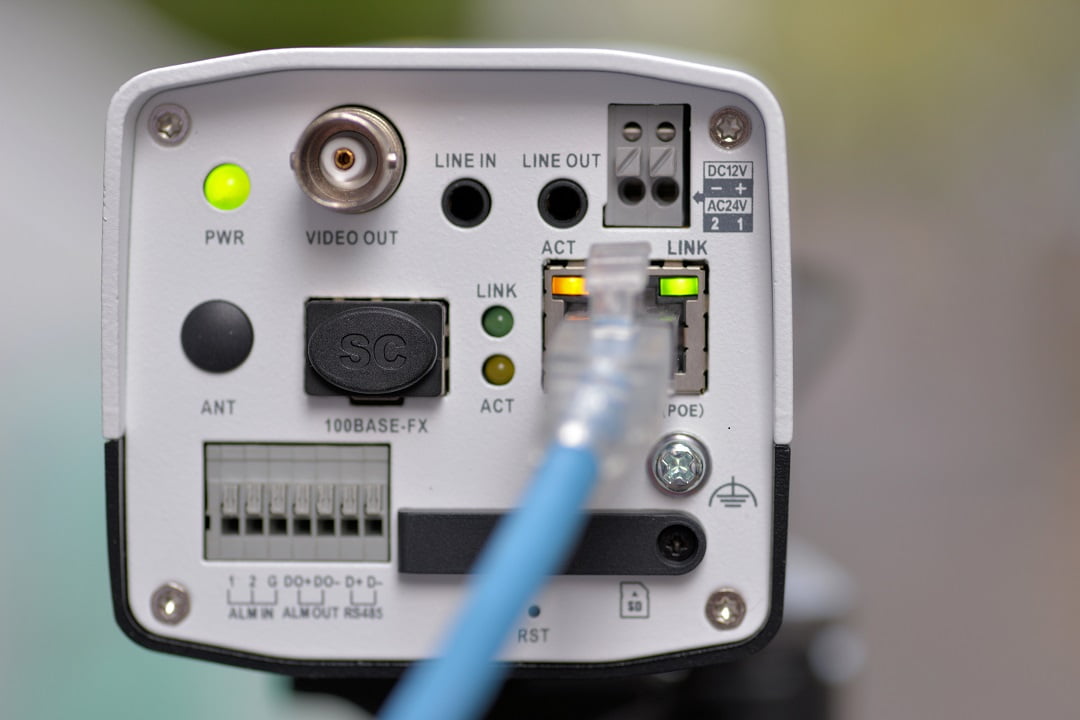
There are plenty of ports on the rear plate, in fact there’s everything on the rear of this camera – RJ-45 with PoE, 100Base FX for multimode fibre direct to the camera, an antenna port, BNC, alarm in and out and RS-485 for data. There’s also audio in and out, as well as 12 and 24V DC for power. The reset button is on the bottom of the plate underneath a thoughtfully covered SD port. All this is good, sensible stuff that will assist installers and end users who need more than just the PoE to the network we see so often with compact bullets and domes.
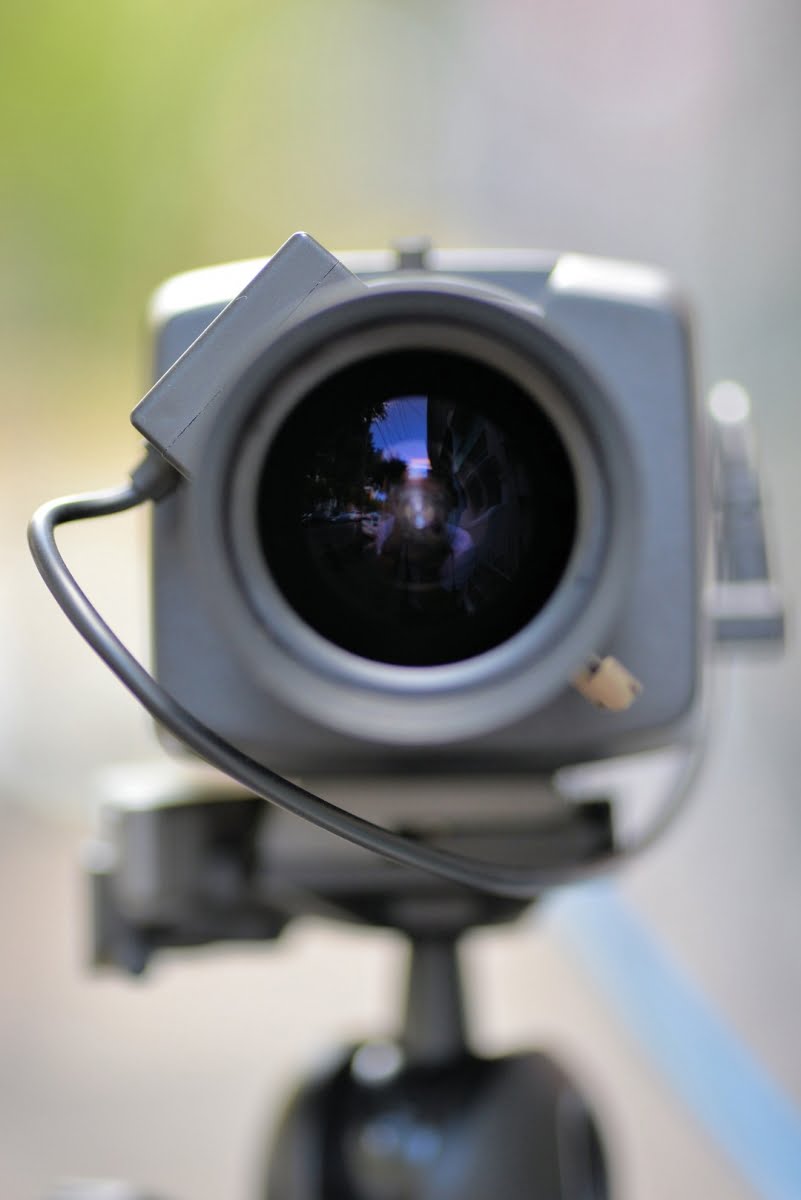
The lens of this camera is a Uniview-branded f1.4 3.8-11mm varifocal with a Magnesium-Fluoride coating on at least the front element. The zoom and focus rings of this lens have metal drag screws so you can lock in a setting tightly once you’re dialled in. The finger feel when zooming and focusing is very nice. The build quality and the smoothness of the internal components of the lens feel like quality polycarbonate. It’s a somewhat longer lens than you’d expect, with zoom and focus tucked up inside the barrel.
Day/Night lane test
It’s a bright summer day – ideal conditions for pushing the limits of a CCTV camera’s capabilities – as I head out the back to set up. I start off with a wide district view at 3.8mm and f1.4 with the sun in the top left of the frame and later on I wind in to 5mm for the rest of the test. I measure light out here at 80,000 lux, which is about as demanding as a scene is ever likely to get. When adjusting the lens a second time, I note a hyperfocal distance of about 1.2m at a focal length of 5mm – it’s easier to set this standing beside my workstation than trundling through the office 10 times, tweaking. It’s way too bright out back to properly see the screen of a handheld test monitor.
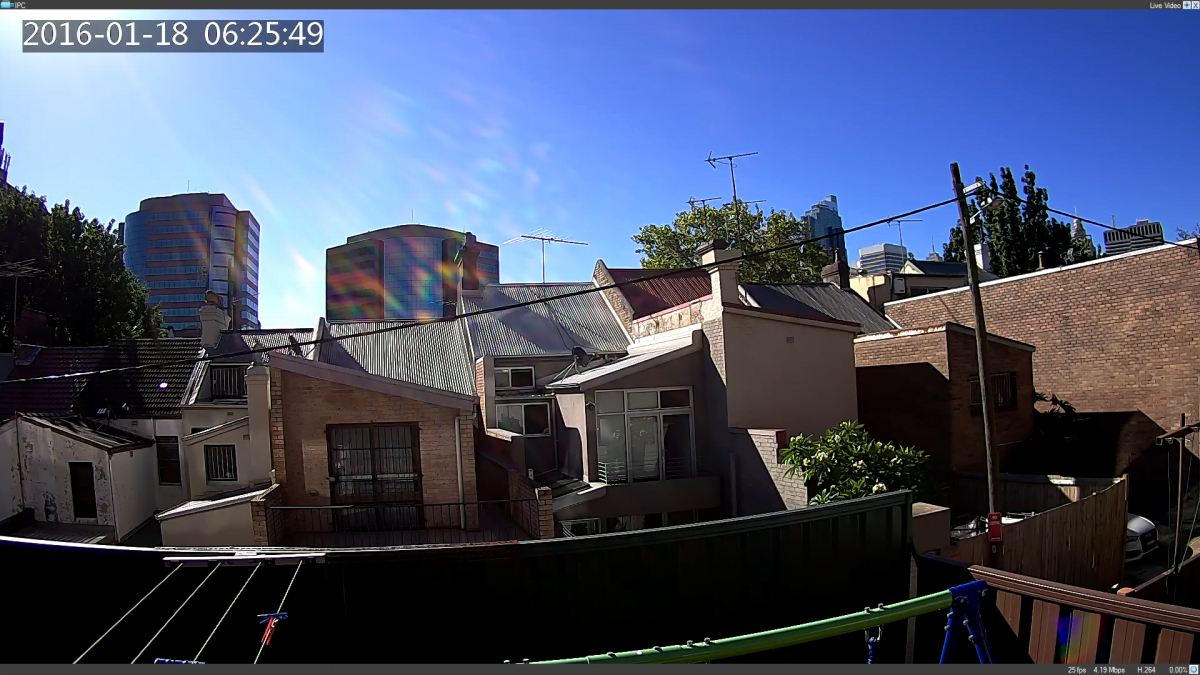
Some flare across the lens in our tough rear lane test wide open at 3.8mm in 80,000 lux with no sunshade – after this I switch to WDR +1 to eliminate the shadows…And yes, that’s the sun top left…Ignore the morning time on this image – it was 5.22pm in the afternoon – I set the camera to server time right after viewing this scene…
At the widest settings of 3.8mm on the Uniview f1.4 3.8-11mm varifocal I get scattered flare and ghosts with the sun in the edge of the frame. At this wide setting the lens itself is out of the barrel and fully exposed but we’ve seen others do better when similarly challenged. At longer settings the lens barrel forms a recessed hood, which adds an element of protection from direct sunlight. Typically, this camera would be housed and shaded if installed externally but flare in the day usually means flare at night and you can’t shade for that. I also notice that at the widest settings there are longitudinal chromatic aberrations around high contrast points but zooming in to around 5mm eliminates most these.
While I’m moving the camera around outside I keep playing with settings and quickly find that with WDR on auto or turned off, shaded parts of the scene are too dark for my liking. I activate WDR and after mucking around for ten minutes at higher settings turning the scenery pink, I set the WDR slider to +1 and leave it there. The tendency of the camera to darken shaded parts of the scene when exposed to intense WDR may have something to do with that big 1/1.9-inch CMOS sensor and it’s certainly a characteristic of many IP cameras we test.
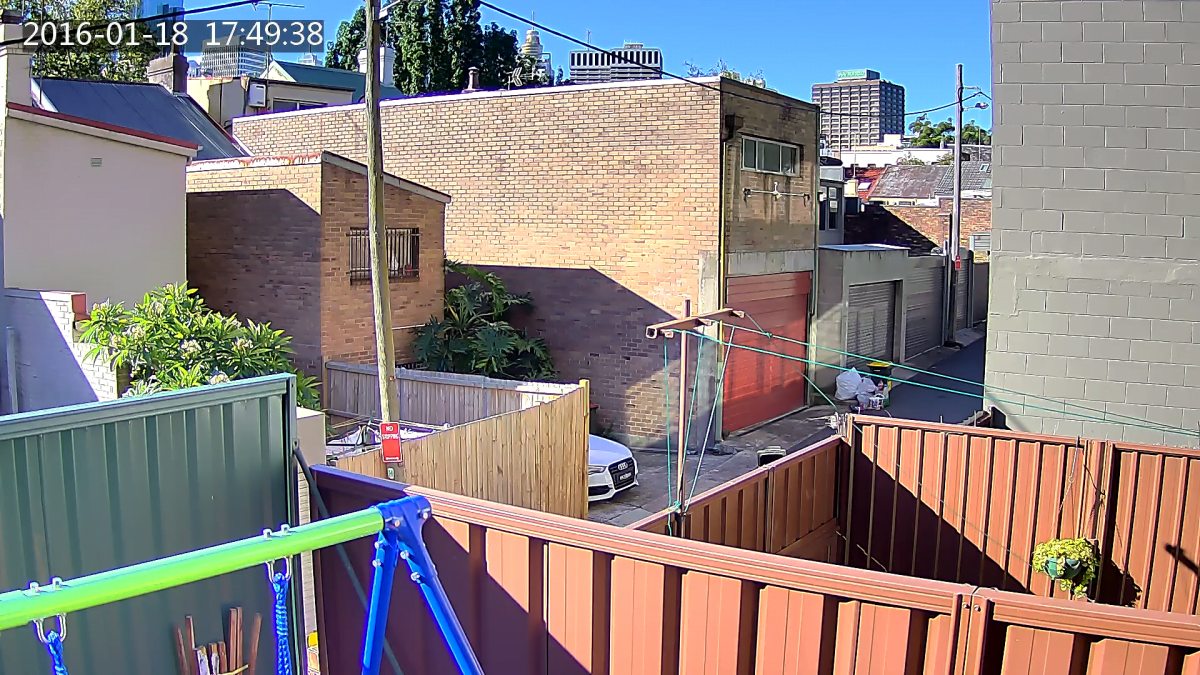
Colour rendition is warm and strong…
At default settings and WDR +1 this is a very colourful camera, with strong greens, reds, blues and browns. I look for but can’t see any vignetting, even wide open. At 5mm barrel distortion is around 8 per cent. As the light falls a little from its eyeball-frying afternoon peaks to around 20,000 lux at 6.19 pm, the depth of field opens up and those CAs all but vanish. There’s quite a lot of tree movement in this scene that relates to a strong wind. This is leading to some DNR smoothing.
Motion blur is at good levels, the image stream is relatively clean at default settings – there’s a small amount of latency – around 350th of a second in my estimation. At 6.57pm it’s 2600 lux and the scene acuity is still improving. There’s a little rendering swim here and there and some signs of digital smoothing but overall quality is high. The image goes on improving for the next 15 minutes or so and once the sun is lost from the canyon of the lane, the image darkens a little but remains notably brighter when compared to other 1080p cameras in this application.
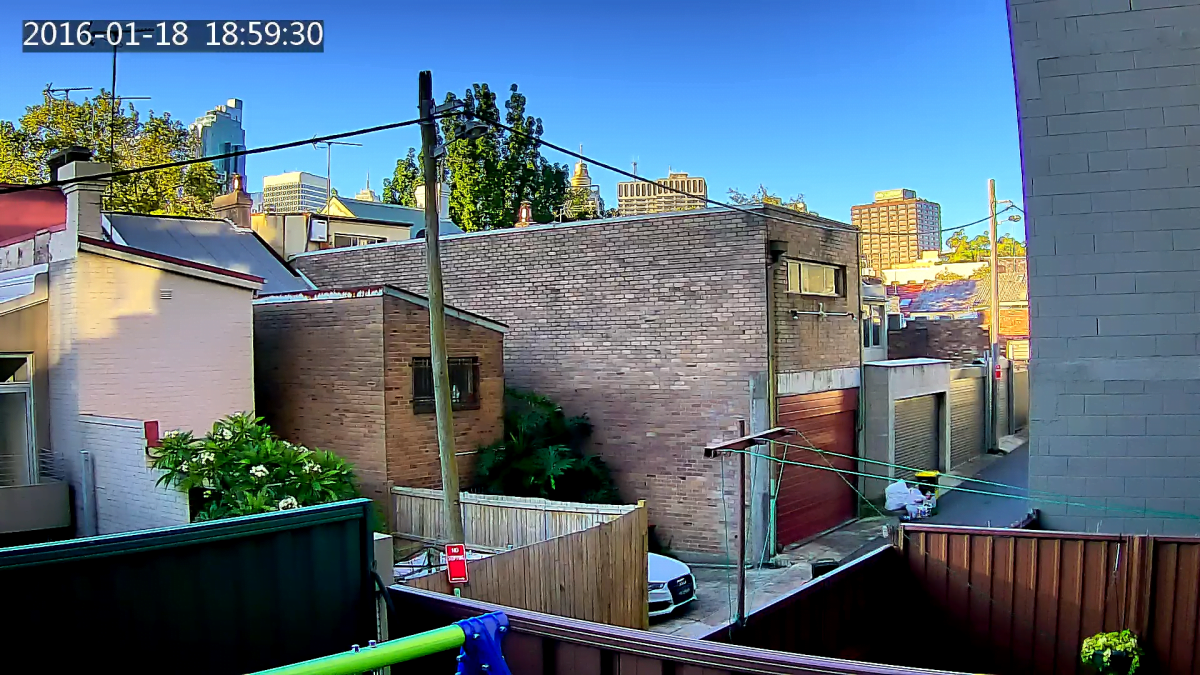
Detail deep in the scene improves as the light and the shadows soften…
At this point I notice the return of CAs in some of the vertical lines in the scene, particularly towards the edges but they are mild and have no real impact on situational awareness. At extreme distances trees and buildings look rendered/reconstructed with reduced levels of detail but closer in – say up to 40-50m, detail is good. As light levels fall, the reconstructed look of the scene creeps closer to the lens. At all times I note colour rendition is well above average. A car goes down the lane and I note again that this camera does pretty well with motion blur.
Consistency of performance as light falls is very impressive. Most cameras register quite noticeable losses of brightness as light levels fall away from very strong to moderate levels but not this Uniview – light loss is linear. Situational awareness is good and detail out to about 25m continues to improve as light levels drop to 900 lux at 7.53 pm. It’s at this point in the test that the image on the monitor starts to seem disconnected from the light levels that can be discerned with the naked eye as Starlight fires up its ISO processing. At this time, I first see the light in the neighbour’s window.
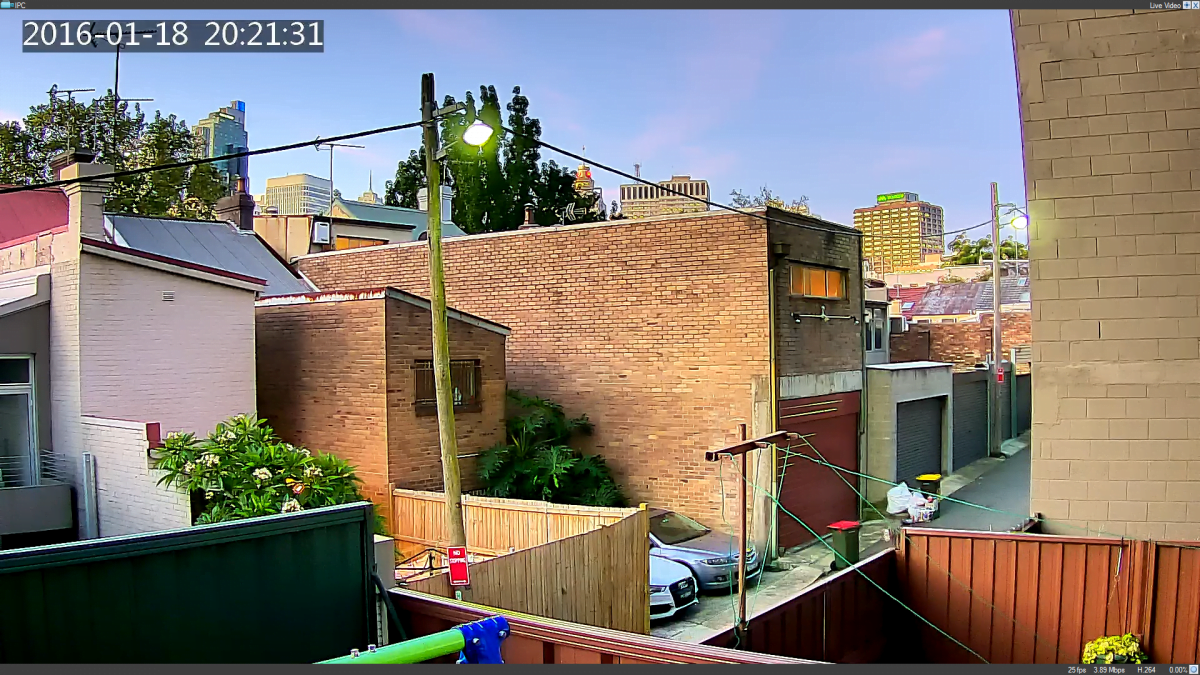
At 112 lux the Uniview IPC542E-DU G Starlight expands its disconnect from the reality of encroaching nightfall. I can see some slight green haze of blooming around the low pressure sodium streetlights in the lane and there are associated CAs nearby. Ghosting and CAs aren’t unusual with wide angle lenses – it’s not so much whether or not they are present – it’s how widespread they are. At 80 lux depth of field is the strongest it has been in the test. I can still see the rhythmic pulse of digital rendering in the scene. There’s plenty of movement from trees and shrubs out back but generally, performance remains solid.
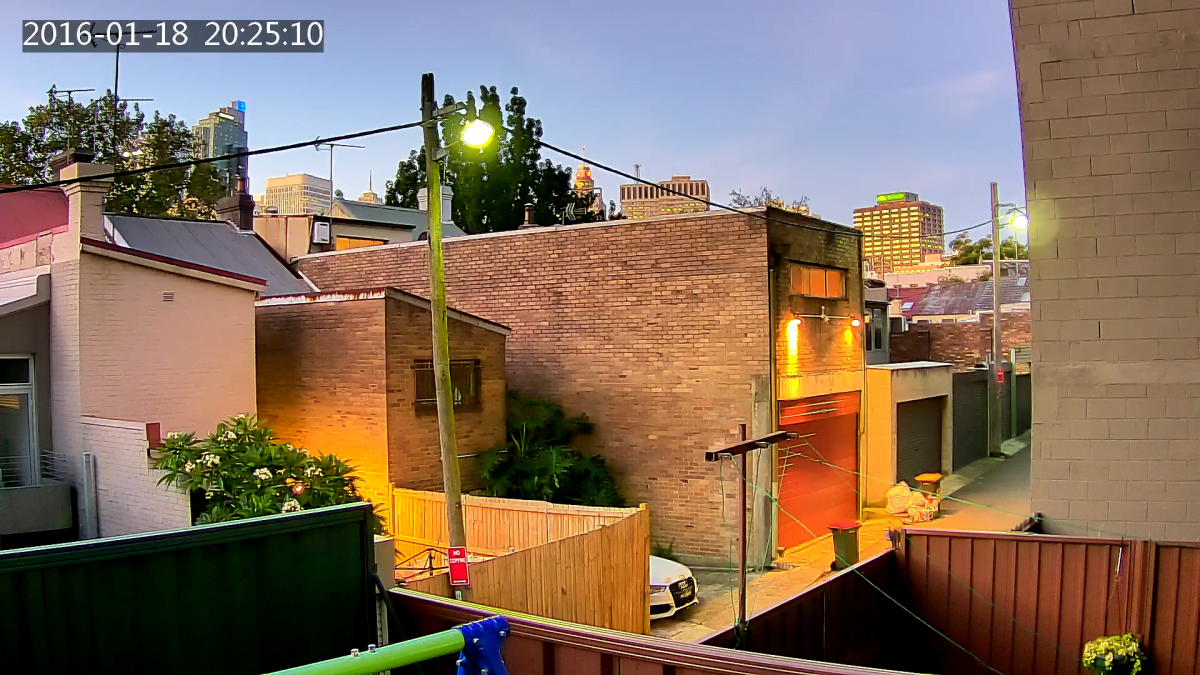
This was 8.25pm and around 10 lux – the first inkling Starlight is a low-light powerhouse…
At 8.27 pm its 10 lux and from here the image starts to soften – there’s blooming around lights and for the first time noise starts appearing as ISO leans in and smoothing as DNR works to compensate. Remember, my settings are default for noise reduction so it will be interesting to see what I can do with some tweaking. At 8.32 pm it’s 5 lux – the image is softer all over now, with more noise in dark spots but it remains silly bright. Starlight reminds me of the S1080 1-inch GBO camera but it’s making do with far less ambient light. The next 10 minutes will be interesting…instinct suggests situational awareness is going to remain strong.
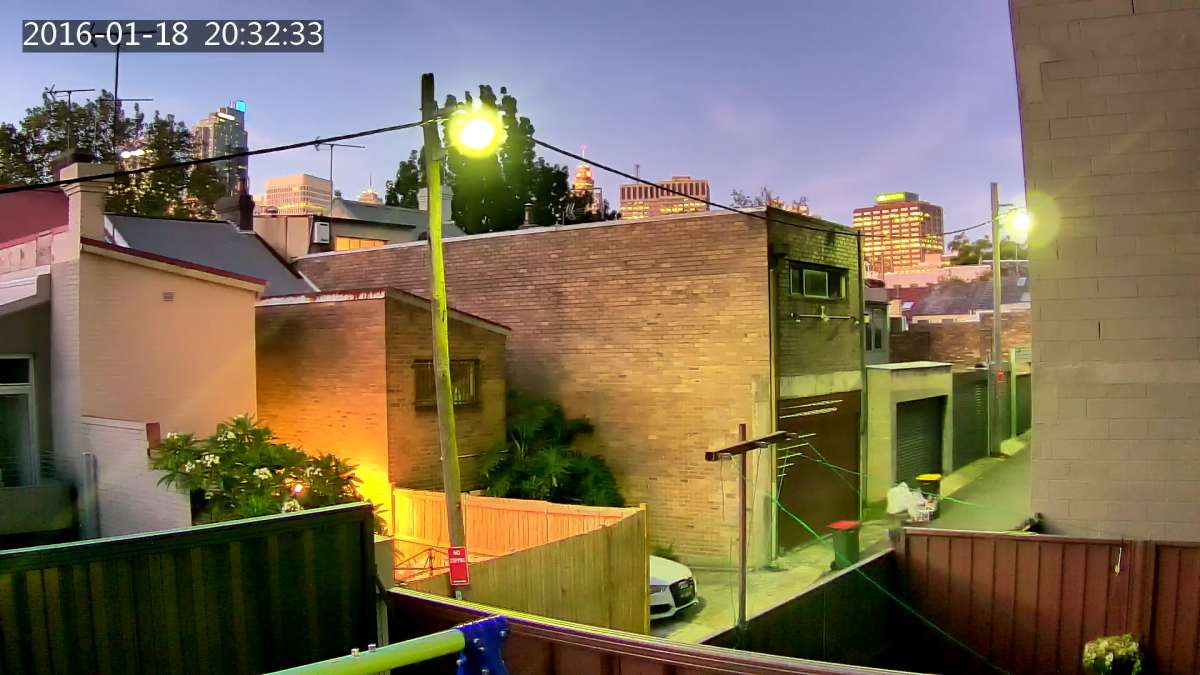
I notice that blooming is increasing along with flare, ghosting, motion blur and noise (it’s down to 3.5 lux at 8.37 pm), as we lose the rest of the light and the auto shutter slows towards its minimum setting.

Low light performance in colour is very linear right down towards sub-2 lux…
There’s probably more flare and ghosting than I’ve seen out here before thanks to the vagaries of the lens but there’s also a surprising amount of detail deep into the scene. The unassisted low light performance of the IPC542E-DU G Starlight in colour is better than some much vaunted opposition – that’s something I did not expect to see.
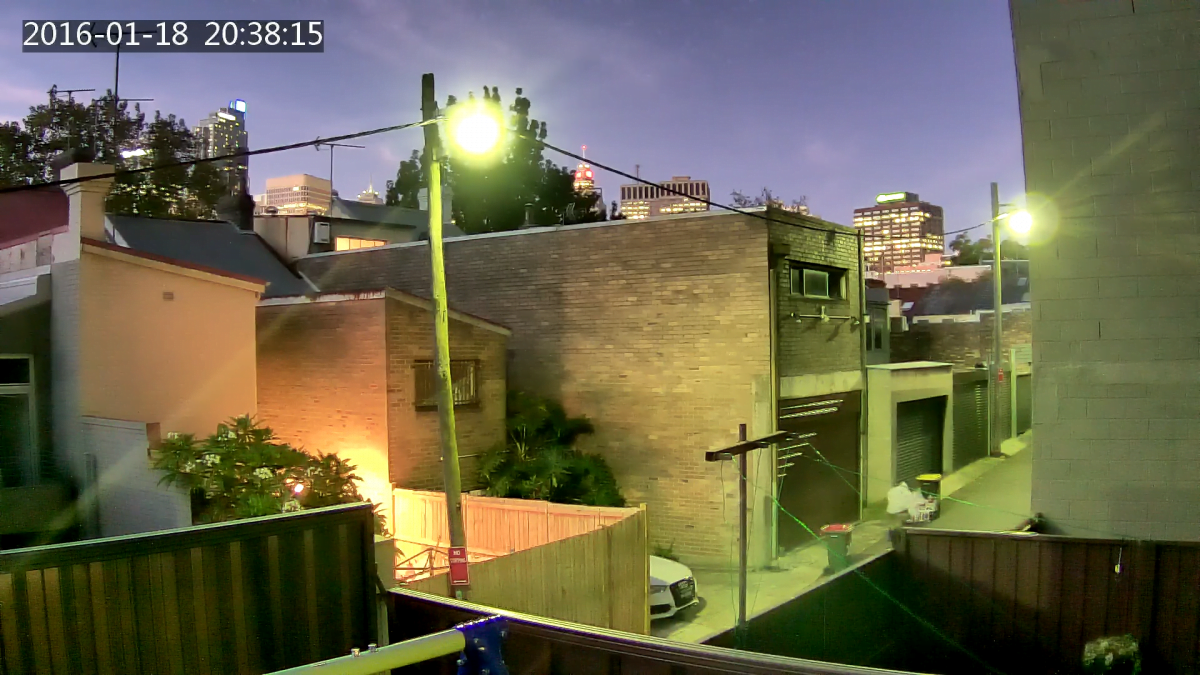
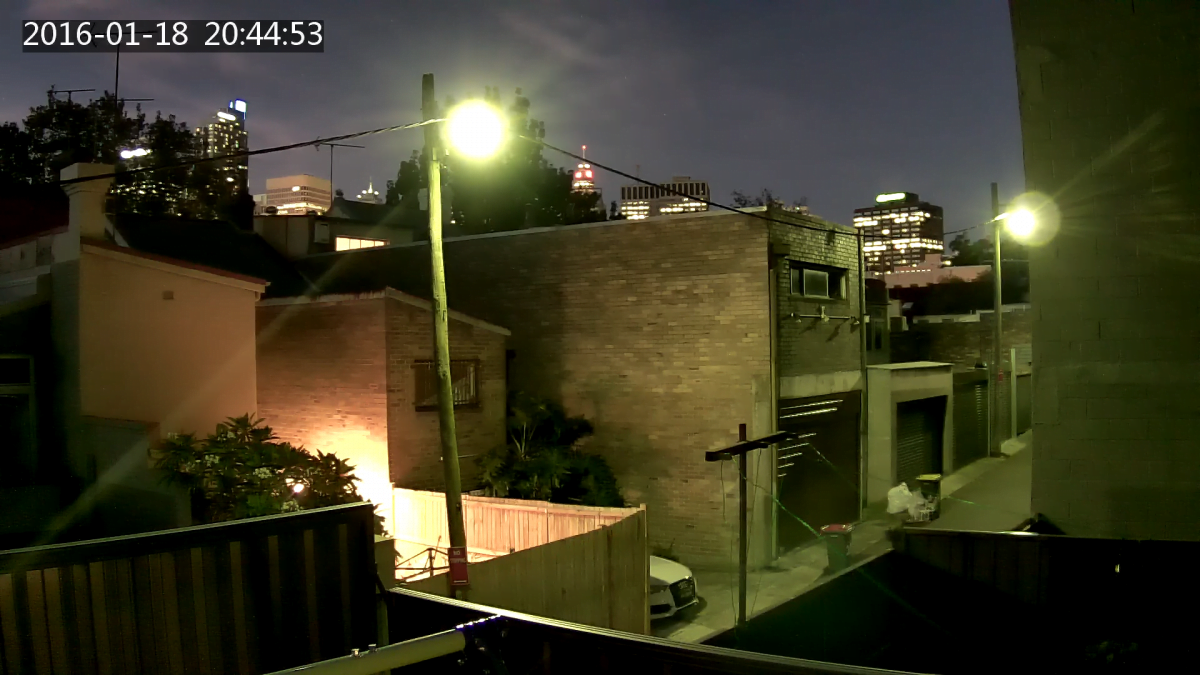
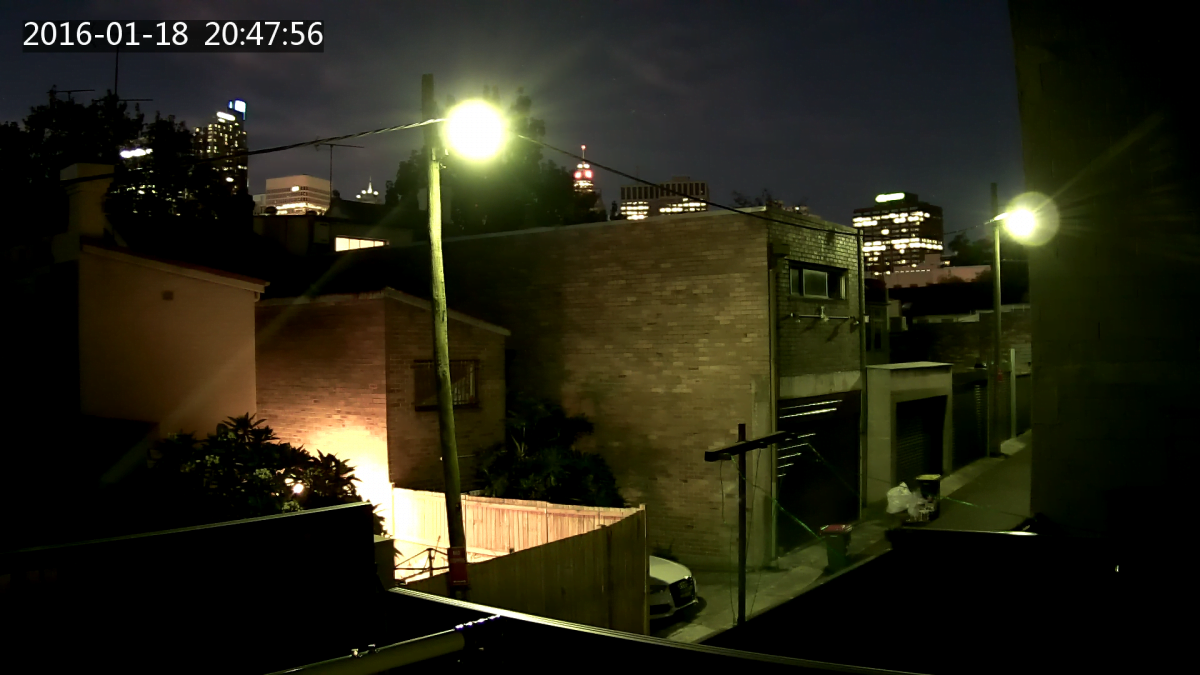
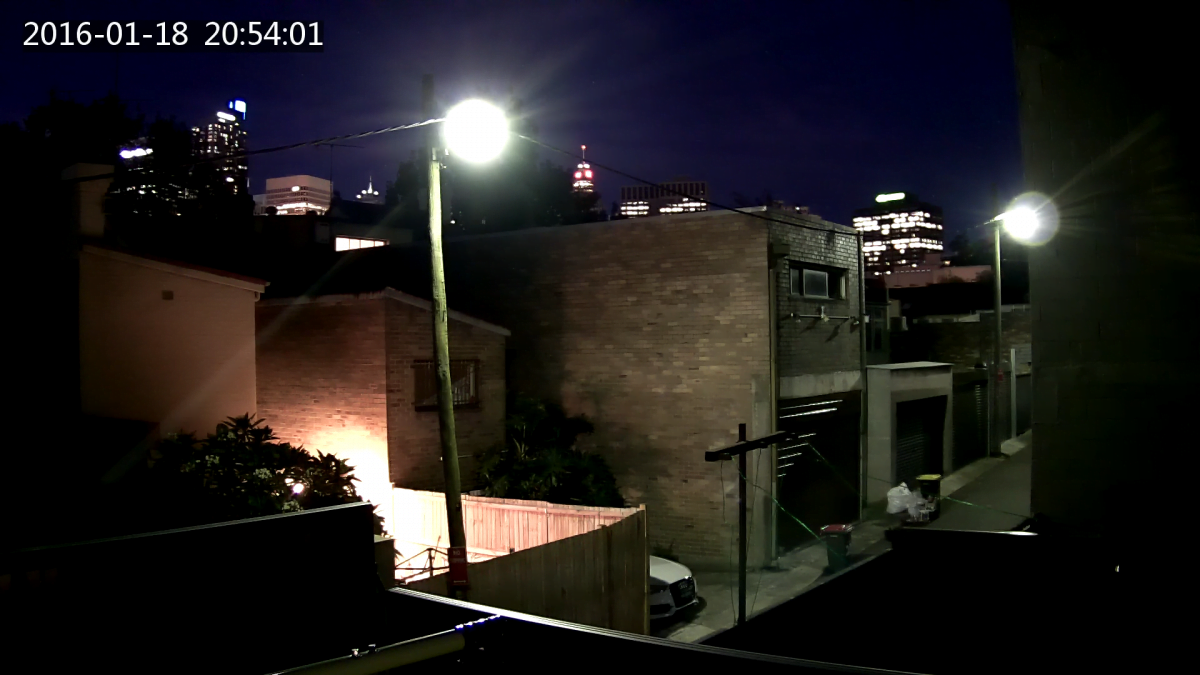
Sub-2 lux at the lens – situational awareness remains good, noise is low – in these very low light conditions I found there’s more detail in night mode.
I’m waiting for 2.5 lux before I play with noise reduction – at 8.42 pm it’s 3 lux – flare is interesting but situational awareness is profound. We’d have to trundle Norman out to ascertain face recognition but I think I’d probably have it out here at around 10m in colour – maybe more in monochrome. At 8.46 pm I am finally under 2 lux and the scene is still colour with a green-ish cast. There’s a point in the space of a couple of minutes where the colour image loses quite a bit of brightness as the scene drops under 2 lux. I have a play with the noise reduction sliders but in this application (very dark holes with bright points of streetlight), I feel I’m losing detail to digital smoothing without gaining much in the way of situational awareness and I revert back to default.
I start off in the office by switching off some lights to provoke auto night mode. Performance in colour in low light is solid but when I start covering my workstation screens to push the camera into night mode, it’s better still – the scene is well under 1 lux and I have good situational awareness. Throwing a small amount of infrared light onto the scene shows how responsive the camera is to IR – it’s really, really good. Very little infrared gives complete situational awareness throughout the 4m x 12m office and out into the kitchen. When I turn all the lights off, including IR, and check for motion blur, it’s clear the shutter speed has slowed down but motion blur remains well controlled.
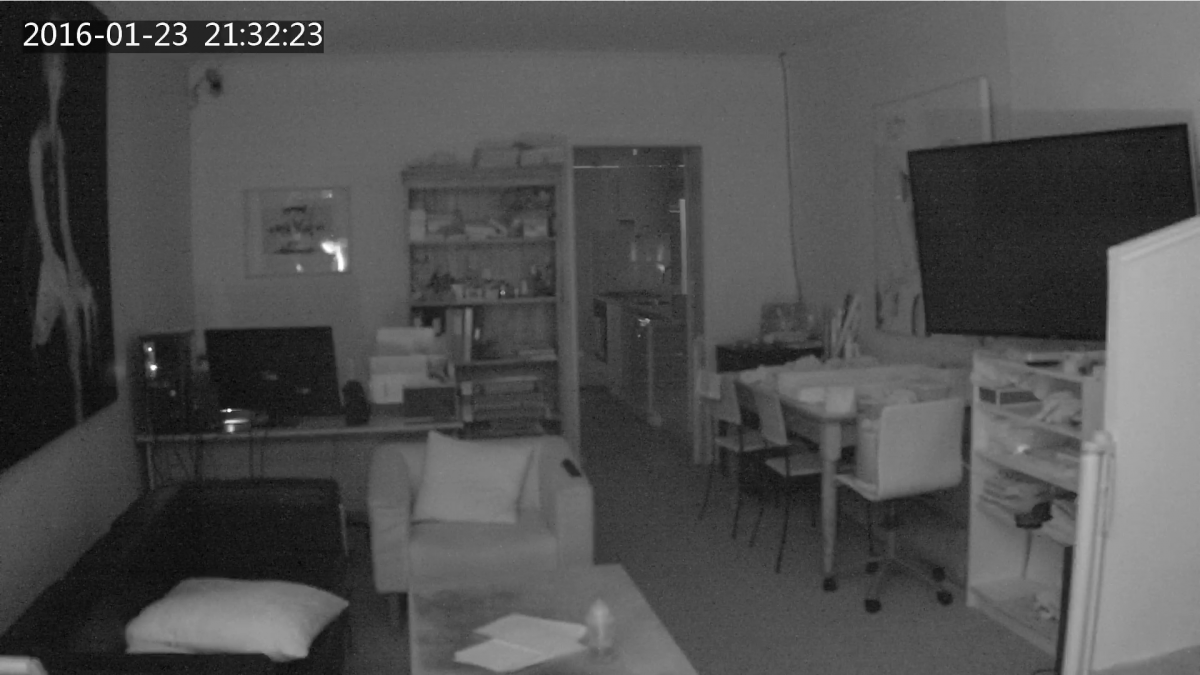
This is with a tiny amount of IR light a few LEDs in the workstation down the end and nothing more…
Going out the front at night is a revelation, too. Depth of field is superior at night to anything I saw in the daytime and so are contrast and sharpness. Why? It may relate to the fact this camera’s overall processing suite is stronger on night work. Another possibility is the influence of elevated ISOs on depth of field. Increases in ISO will increase depth of field for a given focal length and aperture. It’s a fundamental that disadvantages still photographers but assists in CCTV applications. If a stronger than usual ISO is being applied with Starlight, Uniview is doing especially well with noise control.
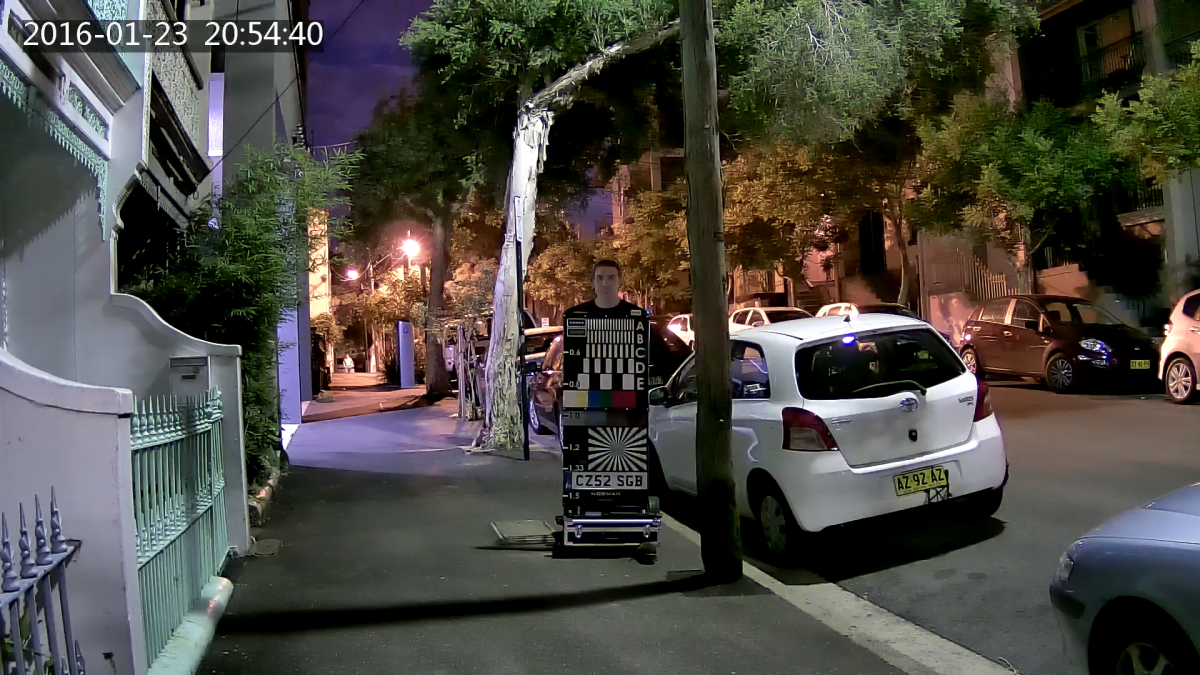
Uniview’s Starlight is a photon monster between 2-10 lux in colour. I’m shocked to get the face recognition at 12m and 16m that I could not get during the day in colour. At 8m (above), Norman’s face is in shadow – you can see how important it is to avoid doing this in your applications.
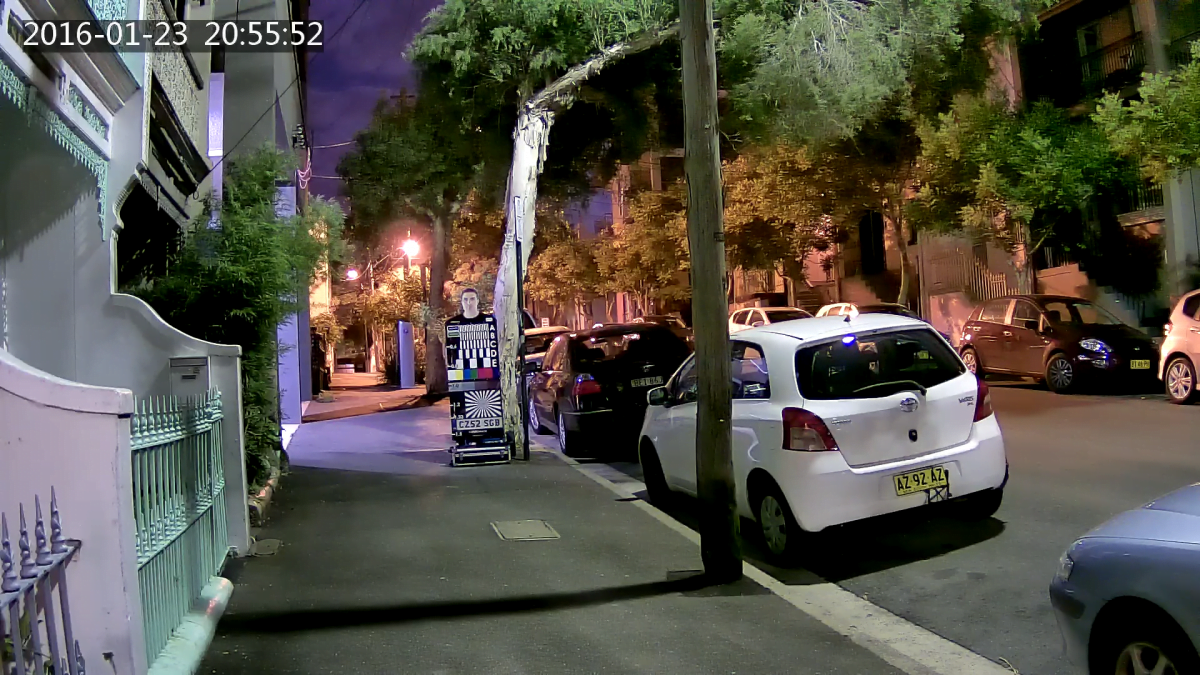
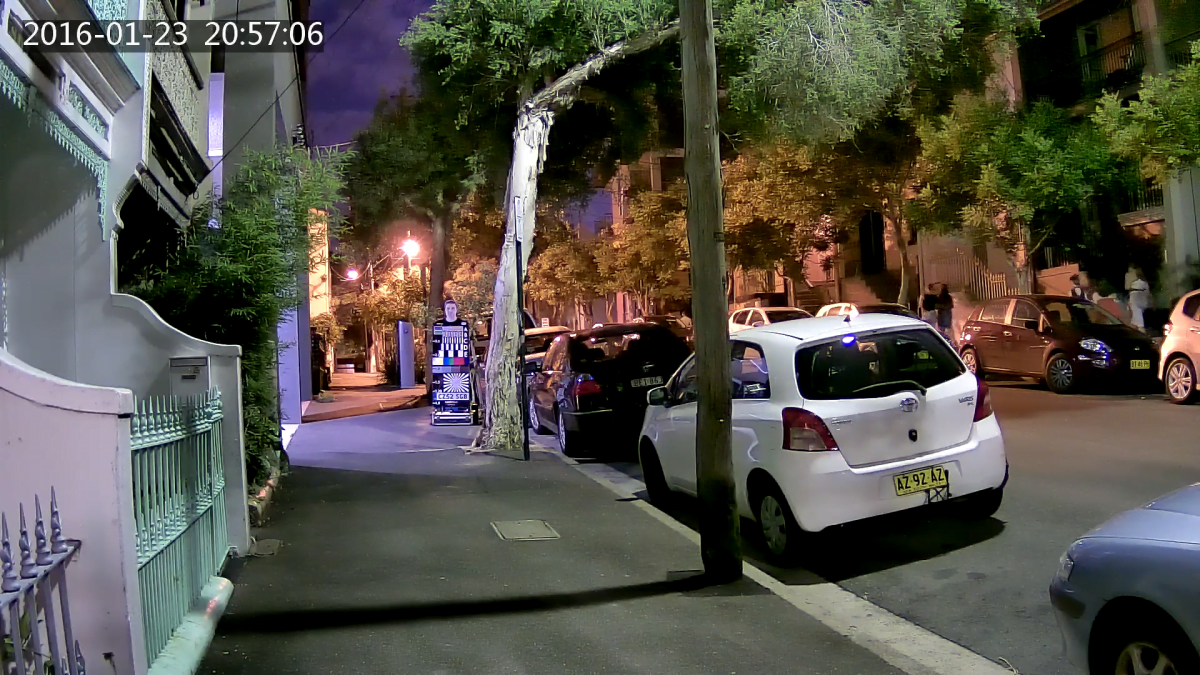
But it’s when I trundle Norman out to 22m that things get seriously weird. Performance at 22m is probably the best I’ve seen from a 1080p camera this far out and contrast is so good I can’t help doing something I’ve never done before – I push Norman back to 26m and then to further still to 30m, trying to find the point at which Starlight’s useful levels of detail end. That point is further than 30m from the lens with 7 lux measured vertically at the target.
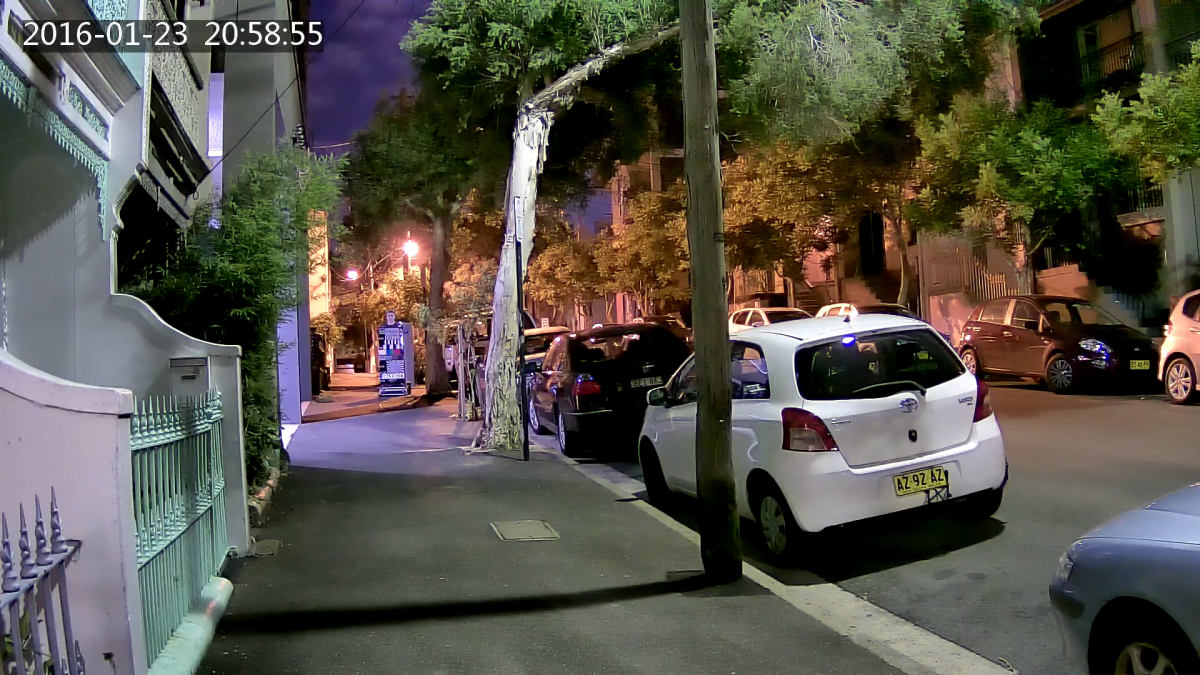

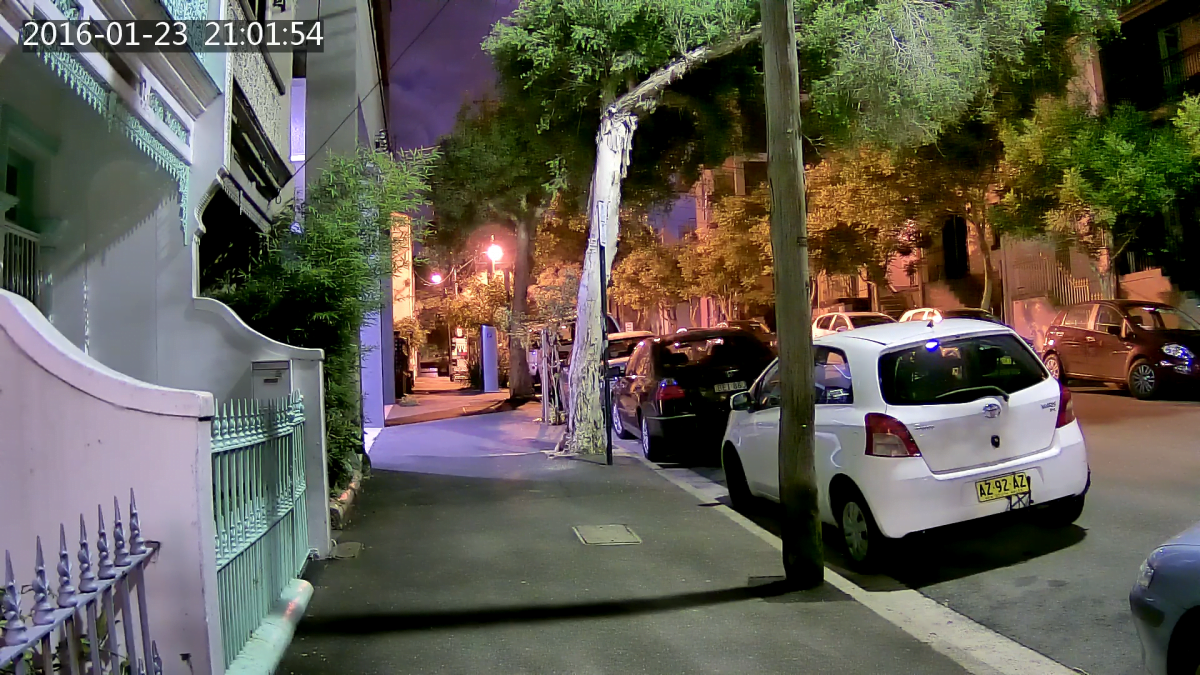
Detail in the website format is not as high as it is in the full screen grabs…
Performance down the hill towards Foveaux St is very strong at 5m with easy face recognition and I can see in the deeper detail that I’d get court admissible face recognition out past 16 metres here, too. This camera does well with situational awareness at long ranges in low light – at 50 metres I can identify car types, groups of people and make out some aspects of dress and gait. It’s not as detailed as some other cameras deeper into the scene but it makes up for it with powerful performance at closer ranges – out to 30m. How would it go using another lens? Better still, I think.
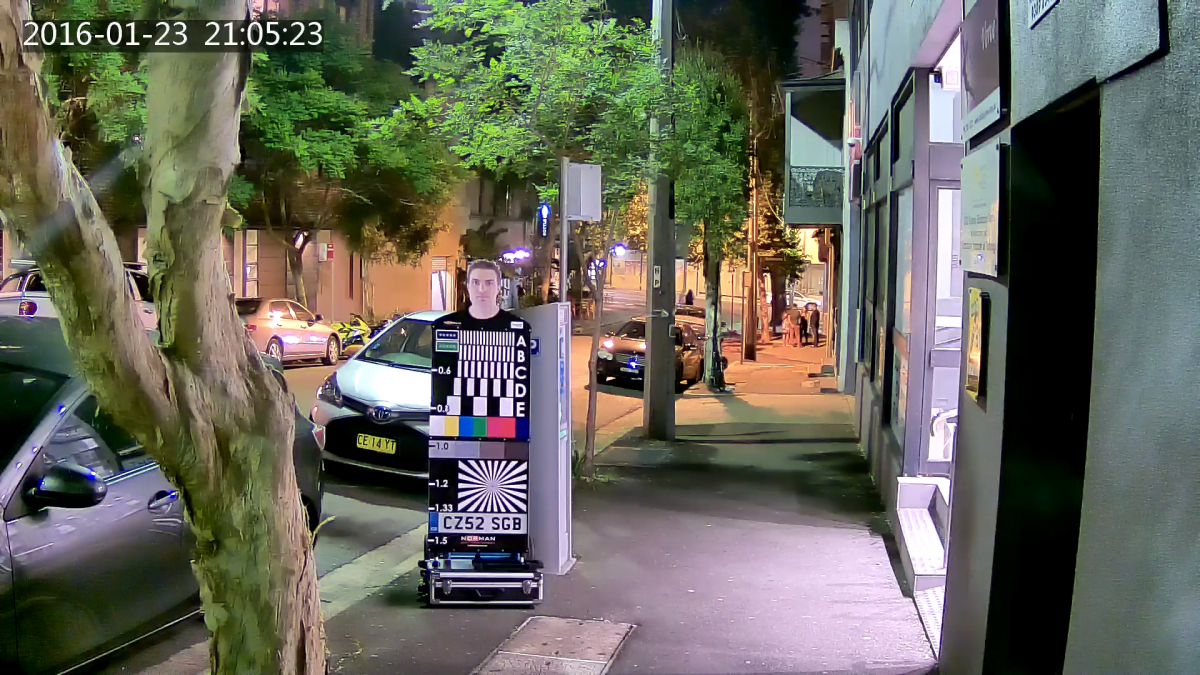
At this point I decide to force Starlight into night mode. The image out the front is already good in colour and night mode’s monochrome doesn’t add much in the way of detail, so I drag the Manfrotto back through the office for another look at the lane. Monochrome performance out here is excellent – situational awareness is complete with less than 2 lux at the lens. That beautiful feeling lens shows it has a few more tricks up its sleeve with entertaining ghosting and flare from the low pressure sodium street lights in the lane but the camera itself is a real gem in these conditions.
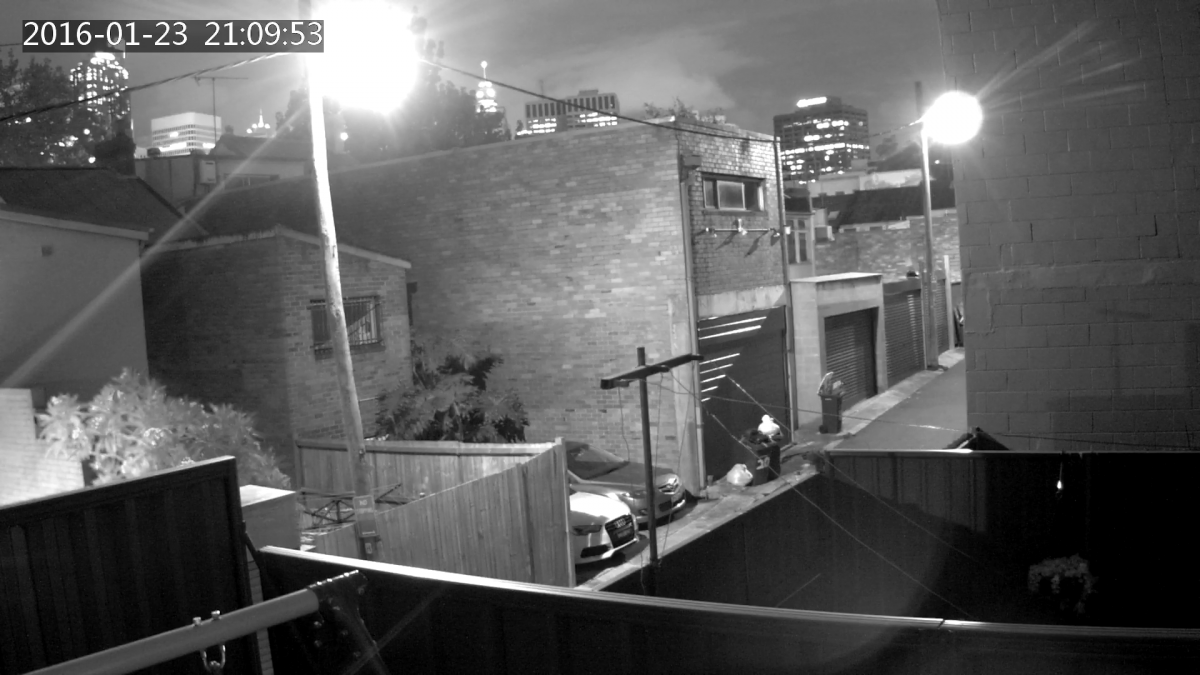
Seeking the borders of performance, I turn the camera away from lit areas of the lane to view the rooftops and trees towards Elizabeth St about 250 metres away down the hill. The levels of detail are exceptional. To the naked eye this scene is generally dark but Uniview’s Starlight is sucking up reflected light like a vacuum cleaner. I keep turning the camera further and further down the lane towards the darkest patch of trees but performance stays uniformly excellent.
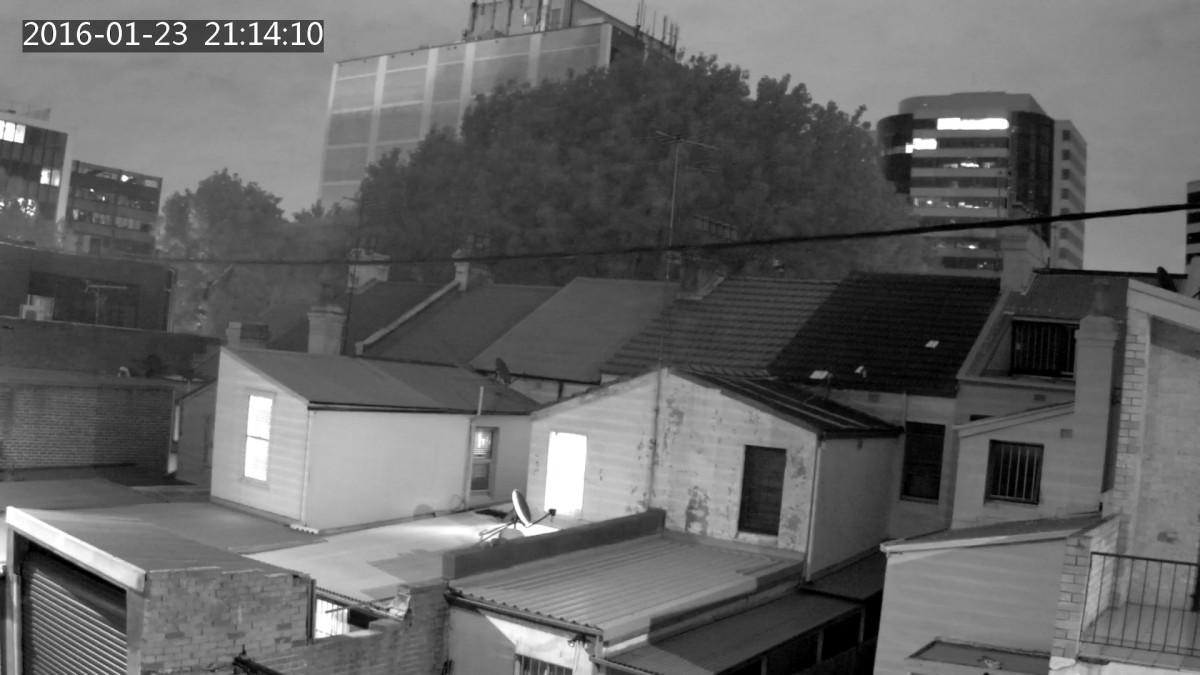
This scene was quite dark to my eye…
Next, I pull the camera off the tripod and put it on a chair in the darkest corner of the courtyard pointing at the fence. I can see almost nothing in this corner with the naked eye. When I get back to the monitor, lo and behold Starlight can see with sub-1 lux at the target. It’s not a crystal clear image stream but there’s loads of detail. I slot an A4 test chart into the scene to get a sense of contrast – it’s soft but there’s face recognition at close ranges in very low light. What’s really interesting is the balance of amplified ISO and low levels of noise in a scene so starved of light. It really is excellent work from Uniview’s engineers.
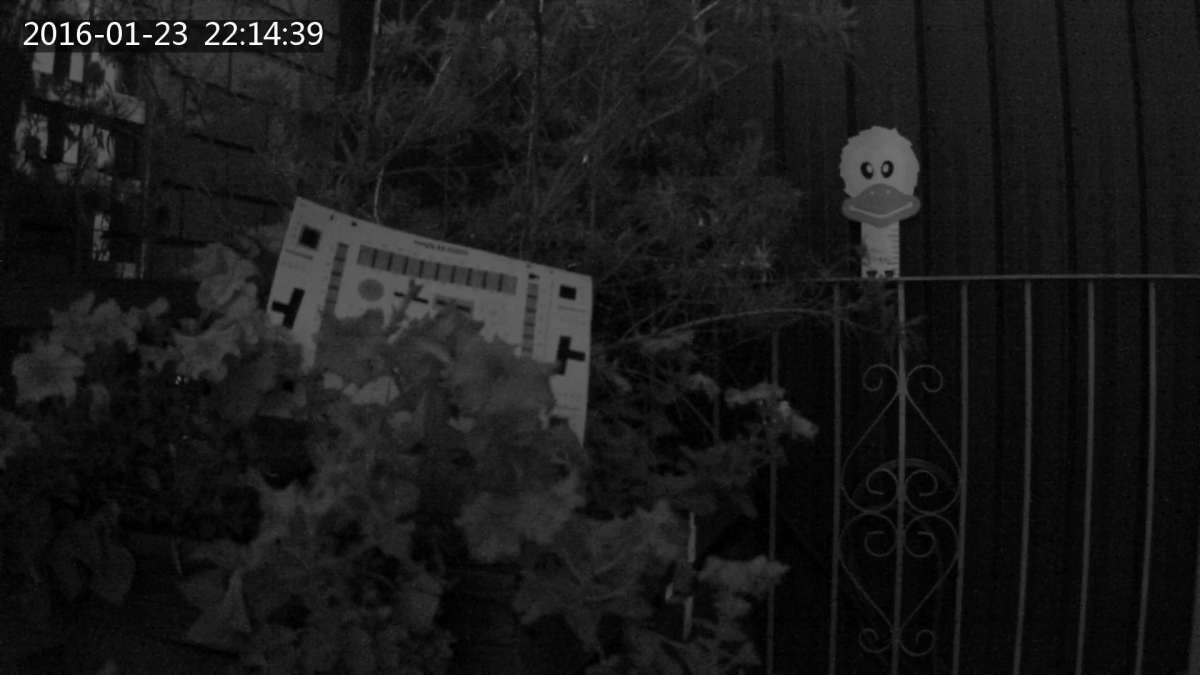
Performance at no lux…
Daytime street test
When I trundle Norman out the front in the afternoon of the following day it’s about 14EV with some afternoon sun. I try the camera at an auto exposure setting but I’m still not happy with the dark and light parts of the image, so I go back to that WDR setting of +1 and everything is very rosy again. At WDR +1, colours are strong, rich greens, blues and reds. There’s a lot of leaf and branch movement on this breezy afternoon and I can see the effort the camera is making in gusts when Norman’s face loses some contrast. This might be partly due to my WDR setting – or not.
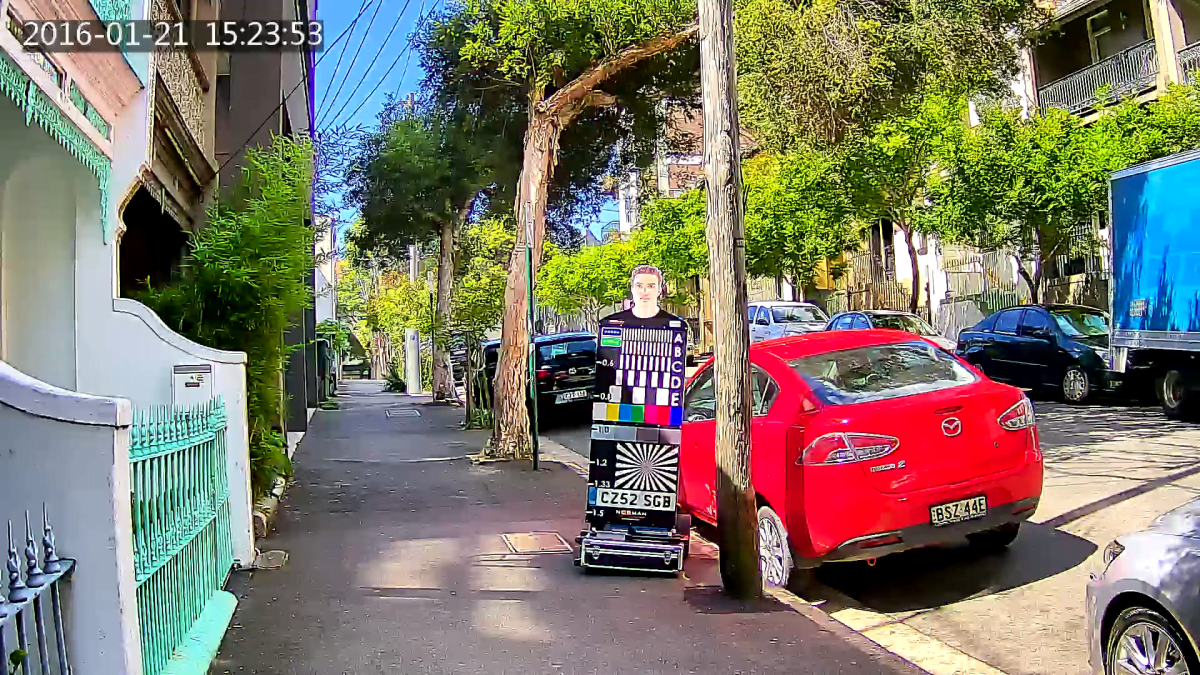
Looking at the image out here on the busy street and playing with the digital zoom gives me a good sense of the camera’s capabilities. This camera offers good depth of field to 30m or so but digital zooming asks questions of sharpness when you go hunting into the scene. I get good face recognition of Norman and every test parameter at 8m.
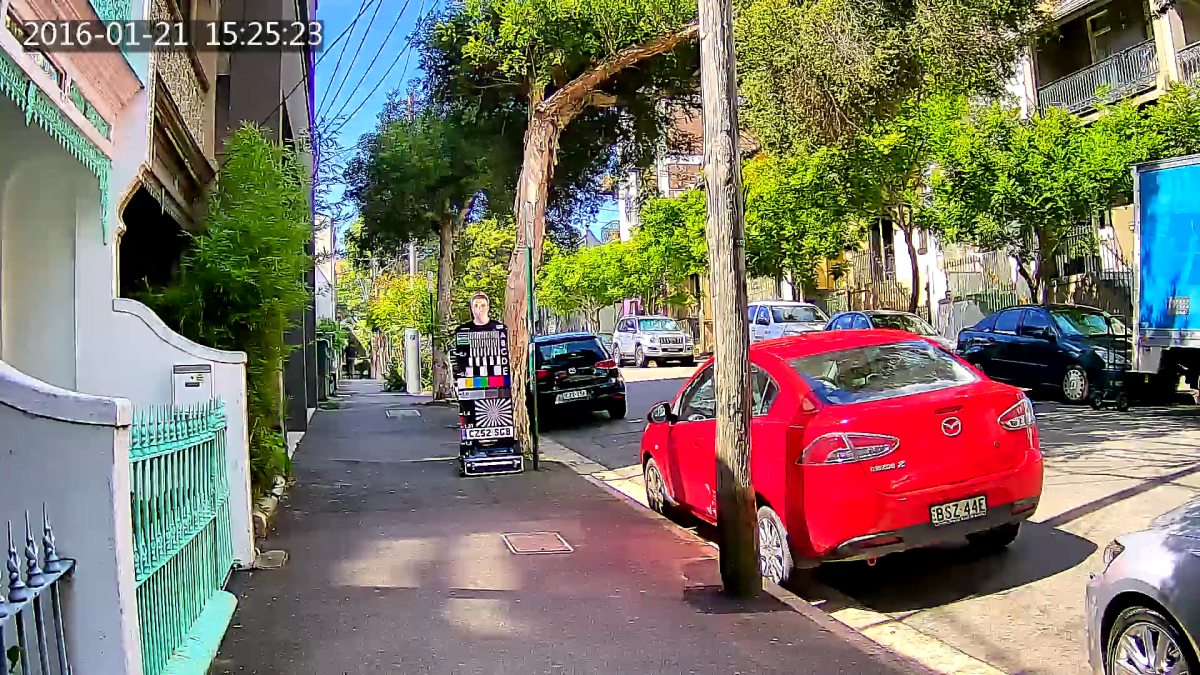
At 12m, in gusts of wind I get some blocking on Norman’s face that impacts on identification and I have contrast on the bars from the C line down. At 16m, I lose face recognition, though the primary bars on the target retain useful detail. At 22m I have situational awareness, and some identifying details and digital zoom isn’t helping me much. In fairness to Starlight, levels of movement out here today are extreme, with a 20-knot Southerly wind blowing that’s stronger in the gusts.

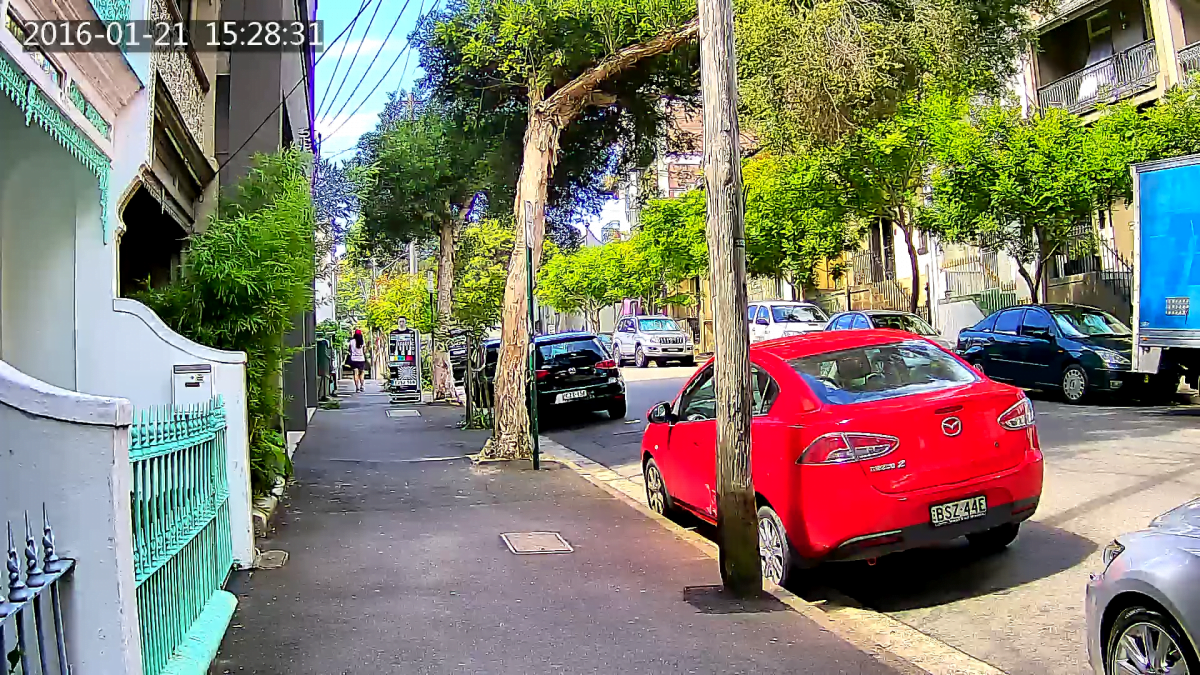
Clothing detail is useful from 22m (this image) out to 40m or so (the image above this one)…
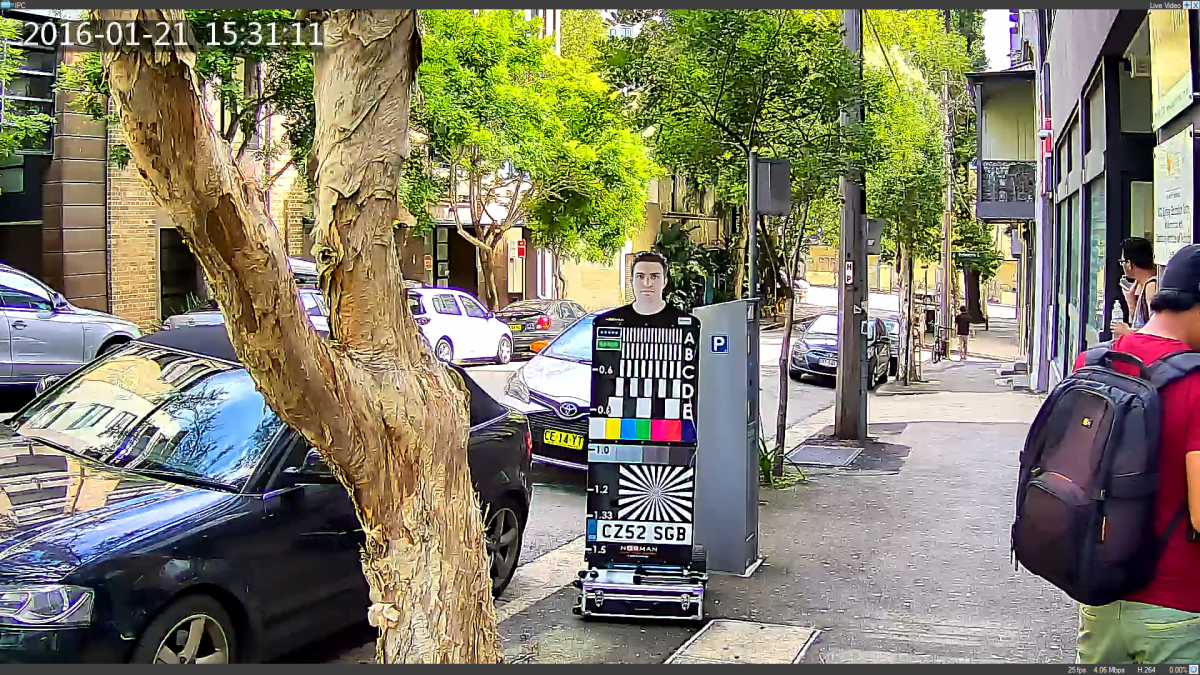
When it comes to lens performance in the street application, there’s no visible flare or ghosting in this part of the test, which I’m conducting in about 5000 lux of reflected ambient light. However, I do notice some chromatic aberrations in high contrast areas throughout the scene. These CAs will subtly reduce detail and impact on depth of field. Barrel distortion at 5mm is very well controlled on the sides and top and bottom of the scene. I again confirm that resistance to motion blur is quite good, too.
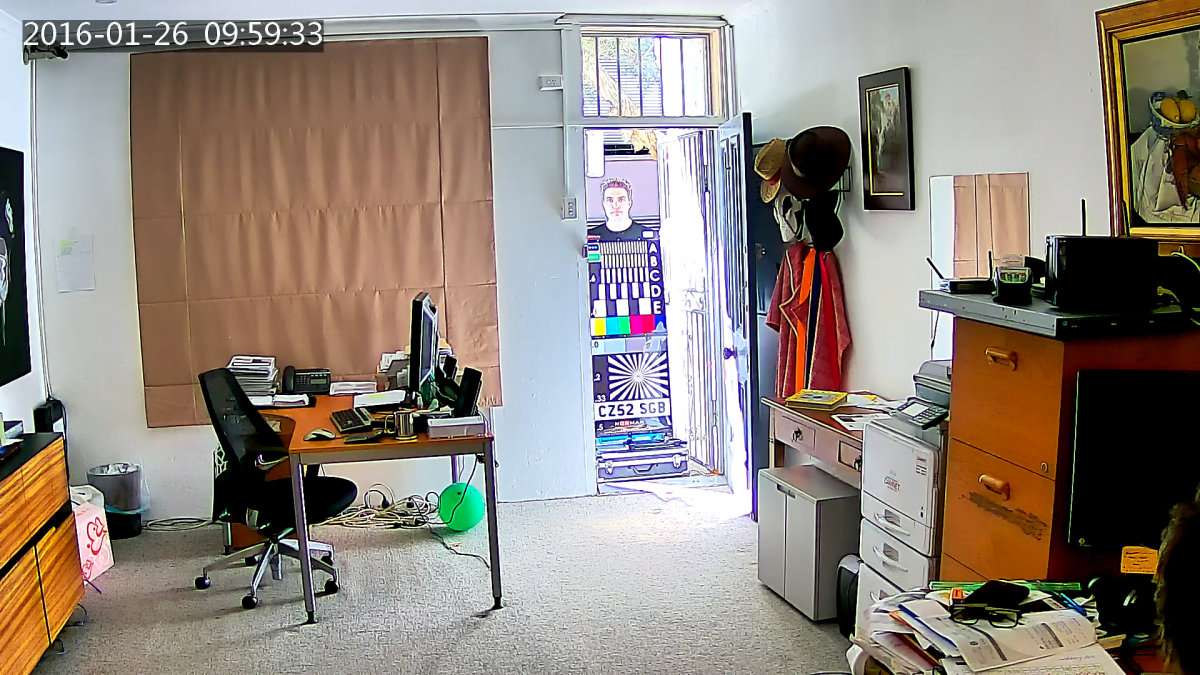
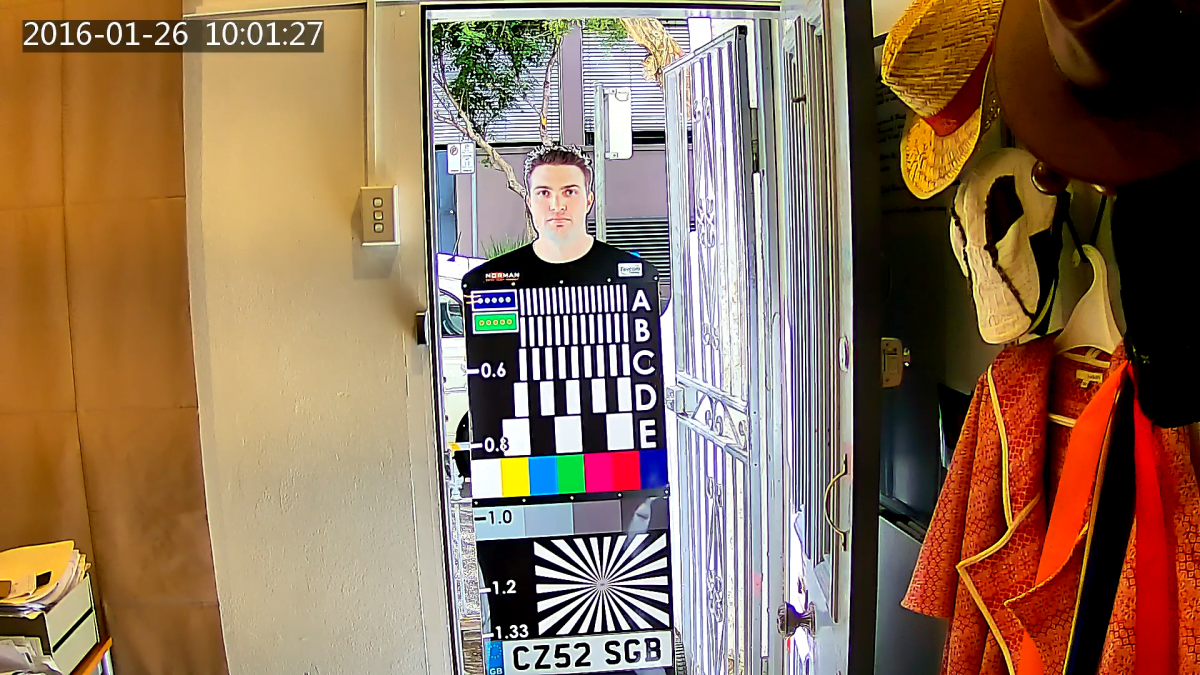
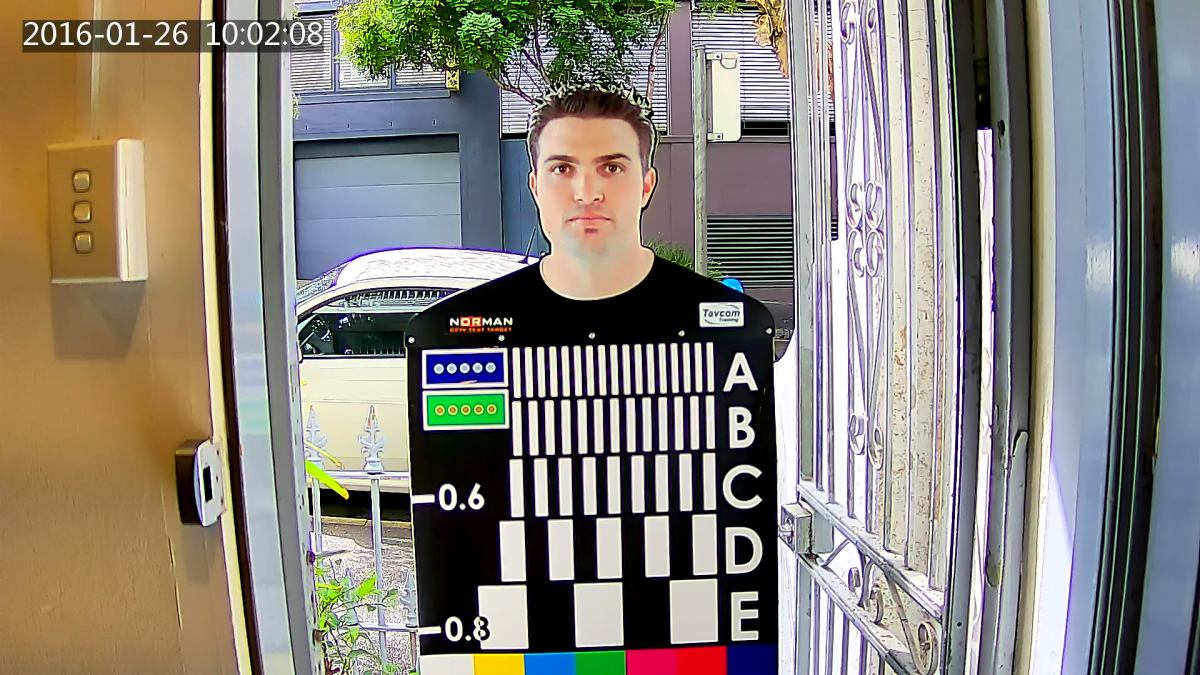
You can get a sense of the CAs around high contrast points in these 3 images – note the lovely colour rendition and excellent WDR performance – very strong sunlight from the side in this scene…
My last test is a WDR test in the morning with 81,900 lux measured in the vertical plane at the side of Norman’s face. I measure at 5, 3 and 1.5 metres – a little closer than usual – and I’m at the front door instead of the rear door of the office to catch the easterly sun. For a camera that offers such good performance at night, Starlight puts in an unexpectedly excellent turn with extreme WDR, too. I have the office lights on (I usually have the kitchen light on at the rear and it cause a little yellow shift in the images that relates to my still advanced WDR +1 setting.
Conclusion
This is a well-made camera with particular strengths in colour in street scenes between 2-10 lux and very strong colour rendition. The camera has excellent performance against backlight and delivers its performance at reasonably economical bit rates and a comparatively economical price. Even after it has been running for days on end there’s no particular warmth detectable in the camera body at all – this is a nice quality that suggests the potential for processor longevity.
I’d like to test Starlight with a different lens. There were some things about Uniview’s 3.8-11mm f1.4 lens I appreciated – its build and finger feel – Uniview makes quality gear, no doubt. But there were a number of things I felt could be improved upon with more careful design – a tendency towards flare, ghosting and to a lesser extent, longitudinal chromatic aberrations. It’s not that the image streams weren’t perfectly useable, it’s that Uniview’s Starlight is a better camera than this lens.
After dark is Starlight’s metier. The camera retained contrast in low light better than it did during the day, pushing our test target out to 30 metres from the lens – the furthest we’ve ever seen. Also of note is the camera’s epic performance in monochrome when pushed into night mode in sub-2 lux, where situational awareness is useful up to 40 metres from the lens. In lower light levels still, Starlight is an absolute cracker. Best unassisted low light performance in monochrome we’ve ever seen with sub-1 lux at the target? Uniview, take a bow.
By John Adams
Features of the Uniview IPC542E-DUG Starlight:
• Auto day/night functionality
• Up to 120 dB WDR
• 3D DNR (Digital Noise Reduction) Compression
• Triple streams
• ROI (Region of Interest)
• 9:16 corridor format
• Wide temperature range: -20C to 60C
• Ethernet RJ45 and optical SFP ports
• ONVIF compliance.



